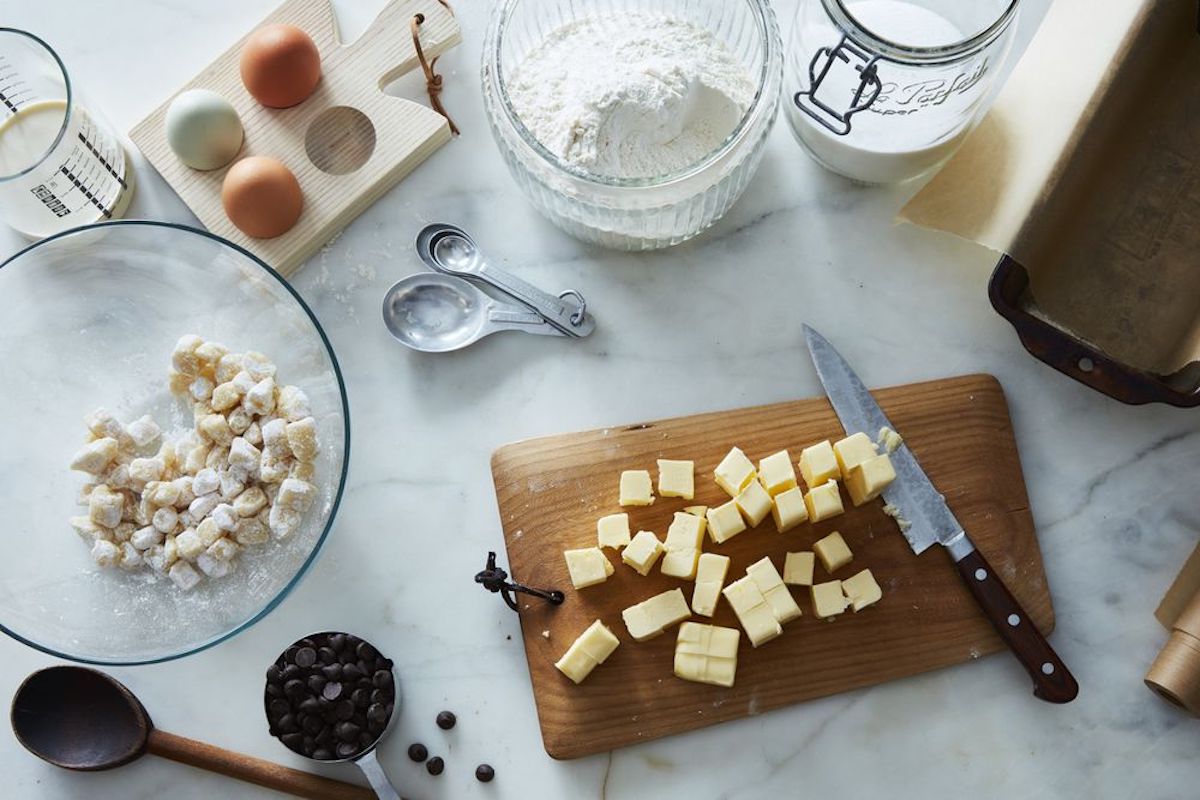Marzipan, the almond-based confection with roots in the Middle East, Latin America, and all over Europe, deserves a better reputation. The average home baker in the United States probably doesn’t consider it to be their favorite flavor, let alone worthy of a permanent spot in their pantry.
But Chef Stephen L. Durfee, professor of baking and pastry at the Culinary Institute of America, is happy to make the case for both points—and restore the good name of marzipan overall.
But first, what is marzipan?
Marzipan consists of finely ground almonds mixed with a sweetener—like sugar syrup or honey. The confection that results can be rolled out, like a dough, tinted, and cut out into shapes.
Back to Durfee: “Typically, what you’d buy in a grocery store is not of very high quality,” he says, explaining that store-bought, mass-produced marzipan is usually made with lower quality almonds, which impart a bitter and sometimes off-putting flavor.
Homemade marzipan, on the other hand, is not going to have that problem.
“If you’re going to make your own marzipan, no one’s going to come across bitter almonds,” Durfee says, adding that even widely available almond brands like Blue Diamond will be a major step up in quality. “You’re going to find the flavor is much nicer.” Made in smaller batches at home, marzipan can be made to suit your tastes (and texture preferences, for that matter) to a T.
This means the finished product will be just as delicious on its own as it is when it’s, for instance, mixed into a cake batter. In exchange for a little extra effort, you just might find that there’s room in your heart (and your cabinets) for marzipan. Here’s how you can make it at home.
* * *
How to make marzipan
1. Prep the almonds.
Measure six ounces of whole almonds into a medium pot and fill it with water until the almonds are just covered. Bring to a boil, letting the nuts cook for about a minute before straining them over the sink and running under cold water. Spread the almonds out on a towel and blot with a second towel. Once the almonds are dry, give them a rough chop in the food processor, then transfer them to a lightly greased, heat-safe mixing bowl. (Blanching the almonds isn’t absolutely necessary, but Durfee says it will help rehydrate the almonds, which can be helpful if they’ve been sitting on the shelf for a while.)
2. Make sugar syrup.
In another pot, combine six ounces of sugar and two ounces of water. Place a candy thermometer in the pot and bring the sugar water to boil. Cook until the thermometer reads 244°F. (or the “soft ball” stage).
3. Combine the syrup & almonds.
Pour the sugar mixture over the almonds and stir together with a rubber spatula, until the syrup cools slightly. The mixture will be quite sticky, but should release from the greased bowl easily. Transfer the contents of the bowl to the food processor.
4. Process until smooth.
Grind the sugar and almonds in the food processor, scraping down the sides with the spatula as needed, until it takes on a smooth texture akin to cold cookie dough. Durfee says this may take about five minutes. To enhance the texture and flavor, you can add a couple drops of vanilla extract or a spoonful of liquor (Durfee says brandy, rum, or whiskey will work best) toward the end of the processing.
5. Enjoy — as a candy or an ingredient.
You can eat the marzipan as is, right out of the food processor if you’re feeling eager, or molded into the shape of miniature fruits if you want to follow tradition. You can also bake it into cookies, bars, cakes, or sweet breads. If you plan to use it at a later date, Durfee recommends closely wrapping it in plastic or foil and storing in a dry place at room temperature, where it will keep for about a month. For longer storage, you can also keep the marzipan in the fridge, where it will stay good for several months.


